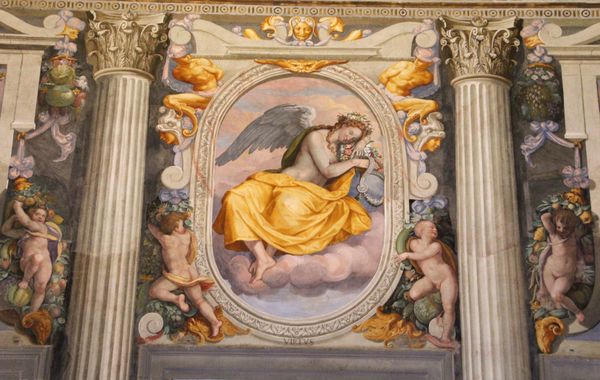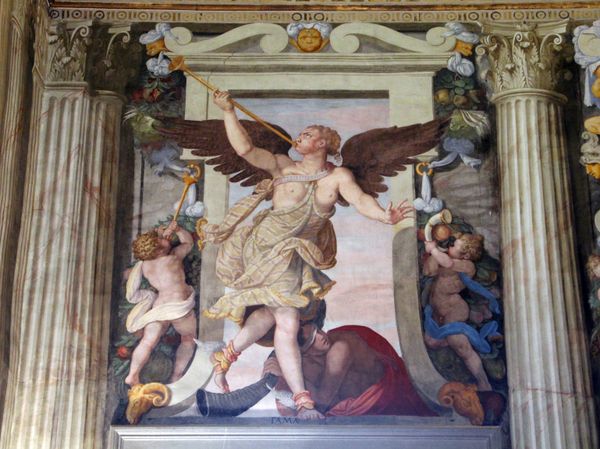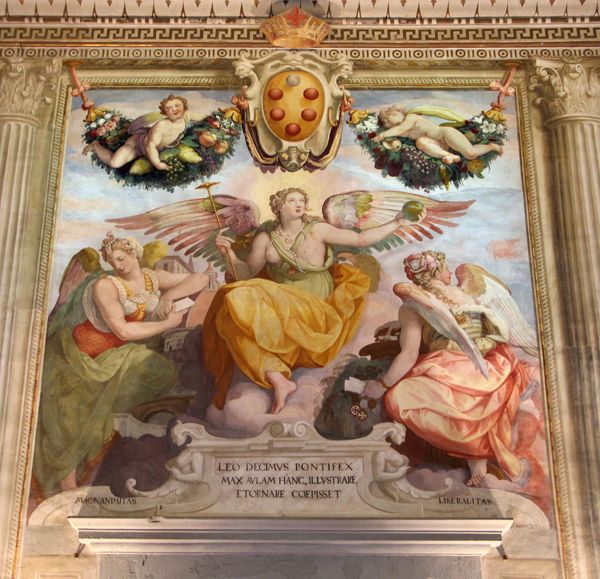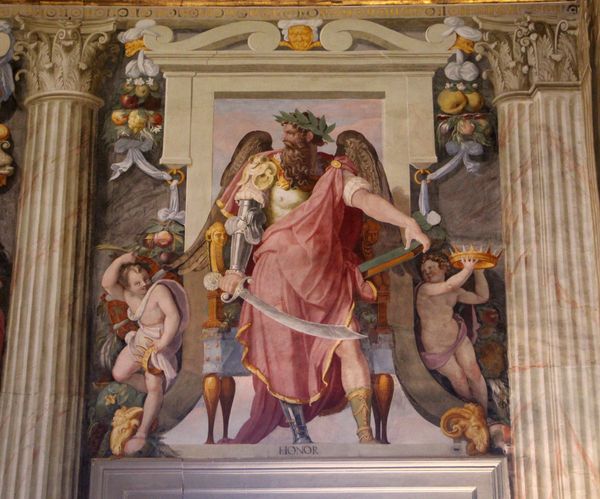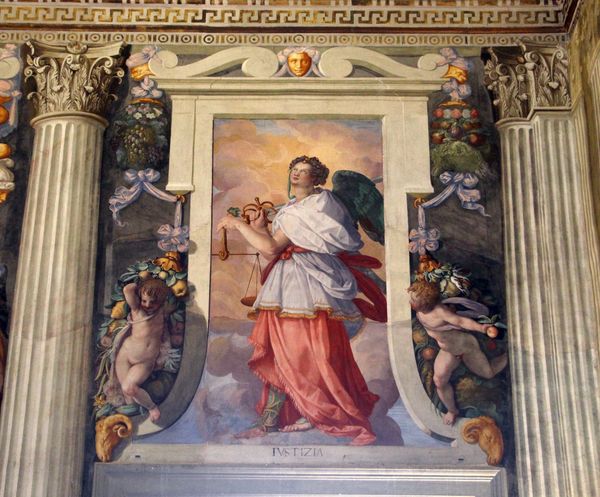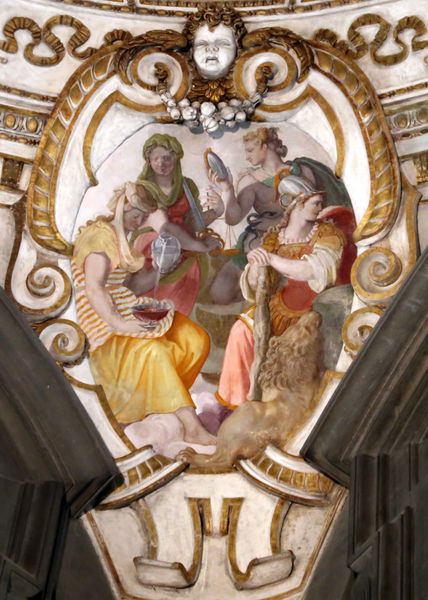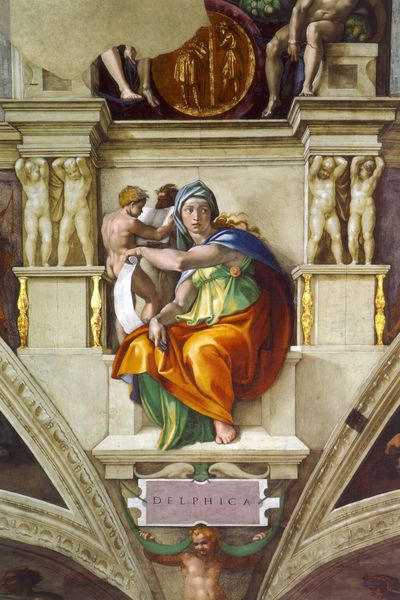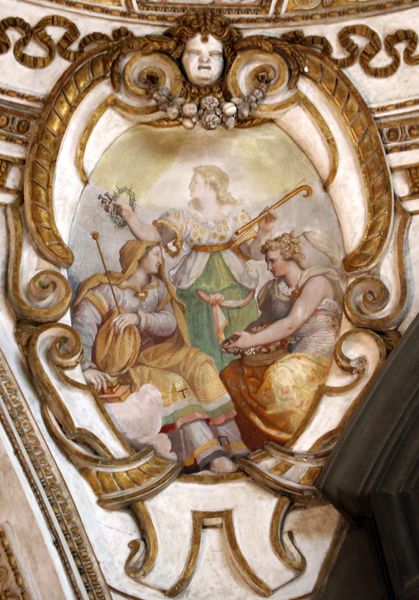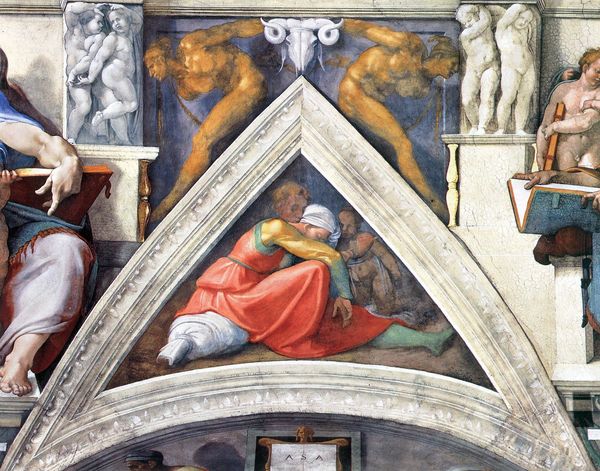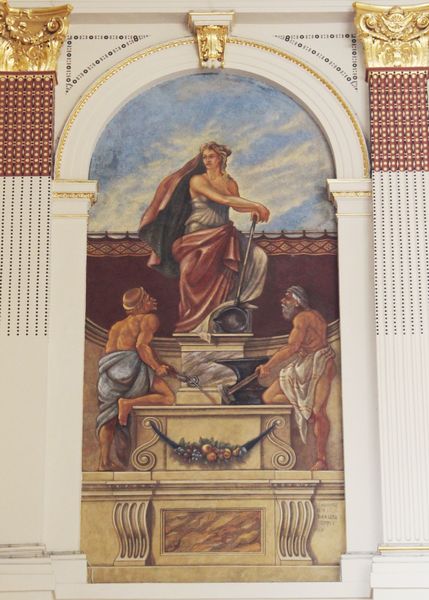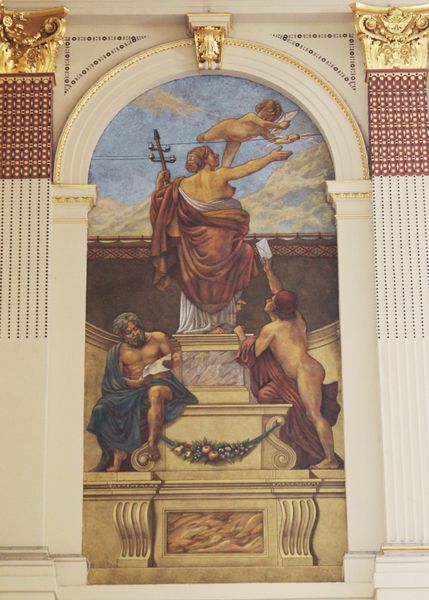
painting, fresco
#
allegory
#
painting
#
sculpture
#
mannerism
#
fresco
#
history-painting
#
academic-art
#
italian-renaissance
#
statue
Copyright: Public domain
Curator: Let’s explore Alessandro Allori's "Glory," a fresco dating back to 1582. Its composition, encircled by sculptural elements, strikes me instantly with its ambitious ornamentation. Editor: Yes, the ornate details are the first thing I notice, almost overwhelming the central figure. There’s a density to the composition, but the linear elements provide clear structure. Curator: Note how Allori blended painting with sculpted decoration – figures draped over the frame, effectively blurring boundaries. This speaks to the Mannerist artists’ attempts to subvert traditional hierarchies of media and skill. Editor: From a purely formal perspective, I'm interested in the layering of forms here—the painted figures encased by the simulated stonework. The trompe-l'oeil effect draws my eye. It complicates the surface and asks us to question pictorial space. Curator: Considering Allori's position within the Florentine art scene, heavily influenced by the Medici court, we can view "Glory" as a conscious performance. The work functions to communicate an aspirational ideology connected to governance and power. The abundance on display and the putti offering fruit signal to prosperity brought about through noble actions. Editor: Looking at the color palette and figuration, one detects that Mannerist influence you mention in Allori's exaggerated elegance. The figure's elongated form and theatrical gesture suggest a deliberate deviation from Renaissance naturalism. The use of color contributes to a stylized feel that sets it apart. Curator: Absolutely. The intense colors, somewhat unnaturalistic flesh tones, and complex arrangement challenge High Renaissance ideals of harmony and balance. It underscores a desire to impress upon the viewer a certain kind of social message, that’s why there is abundance everywhere, in materials and symbols. Editor: Despite this complexity, there’s an underlying harmony achieved through repeated motifs and carefully balanced colors. I think it offers a visually engaging study of contrast, in technique and form. Curator: It truly encapsulates how the late Renaissance was reinterpreting its legacy through conscious ornamentation, in service of shaping particular socio-political values of the time. Editor: A fitting encapsulation indeed. Thanks to the combination of careful analysis and some visual clues, we were able to dive in and see through the creative process, I think.
Comments
No comments
Be the first to comment and join the conversation on the ultimate creative platform.
